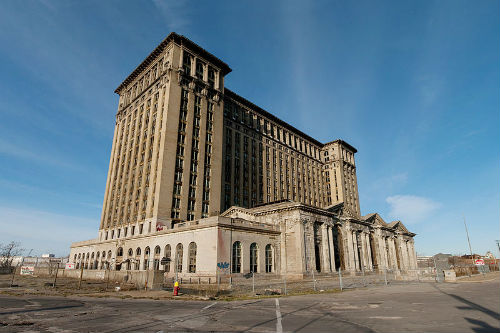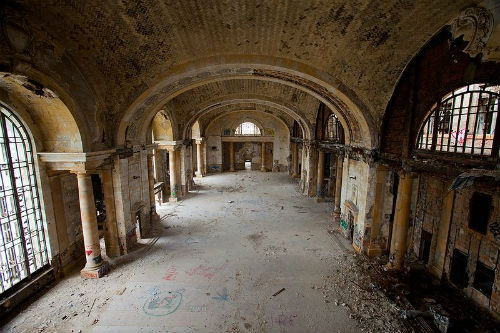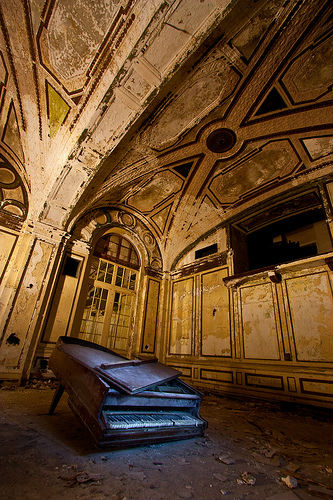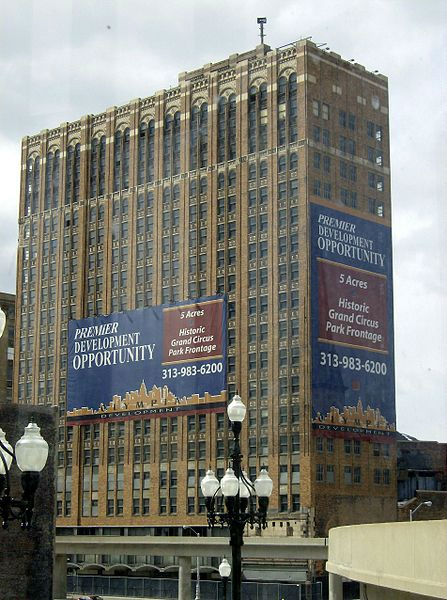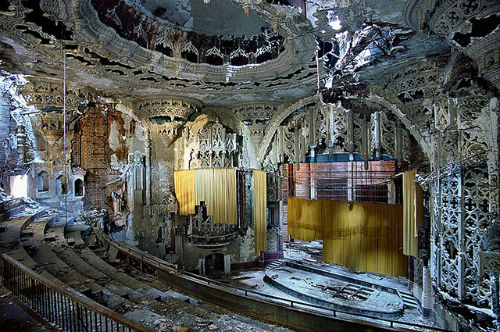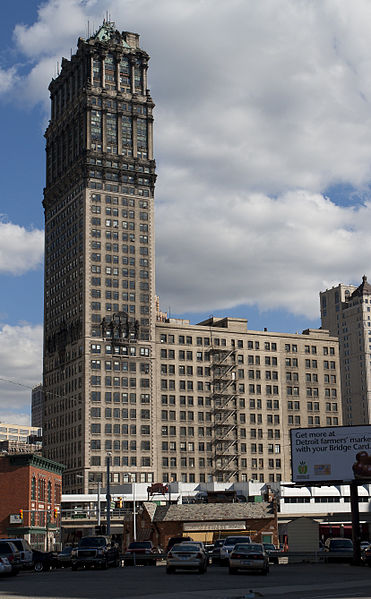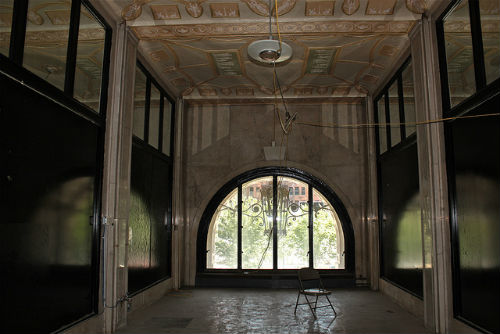Today’s installment in our series on abandoned places takes us to the abandoned buildings in Detroit, Michigan.
1. Michigan Central Station
Detroit’s most iconic vacant ruin, the Michigan Central Station was once a profitable railroad hub. Built in a Beaux-Arts Classical style between 1912 and 1913, the building has been closed for over 20 years and was almost demolished in 2009 before local residents sued the city citing the National Historic Preservation Act.
2. Lee Plaza Hotel
The Lee Plaza Hotel was designed by Charles Noble and built in an Art Deco style in 1929. Originally constructed as a 15 floor high-rise hotel, the Plaza was eventually converted into an upscale apartment with hotel services. Prior to closing in the 1990s, it had been used as a senior citizens’ complex.
3. United Artists Theatre
Located at 150 Bagley Street, the United Artists Theatre was a first-run movie house and office space designed by C. Howard Crane in 1928. The Theatre had a seating capacity of 2,070 people and was designed in a Spanish-Gothic style. After the theatre’s closing in 1978, it served as the Detroit Symphony Orchestra’s recording theatre until 1983. The building has remained vacant since 1984.
4. Book Tower
Built between 1916 and 1926, the 38-story Italian Renaissance-style skyscraper was named after the Book Brothers. Gallery and retail outlets occupied the first and second floors of the prestigious address on Washington Boulevard, with businesses occupying the rest. Beginning in the late 1980s, the once profitable Book Tower was in mortgage default. With its last tenant, Bookie’s Tavern, moving out in January 2009, the building remains completely vacant. Talks are underway of renovating the Tower into 300 apartments and retail space.
5. Farwell Building
The Farwell Building is named for the estate of Jesse and Emmer Farwell. Built in 1915, the 8-story rectangular building was designed by architect Harrie W. Bonnah. The interior design features decorative iron grillwork, marble walls, a Tiffany mosaic ceiling, and brass elevator doors. Vacant since 1984, the State of Michigan has been in negotiations to purchase the building via the federal Neighbourhood Stabilization Program.
For previous entries, please click here.

